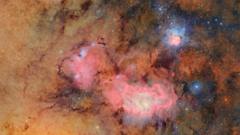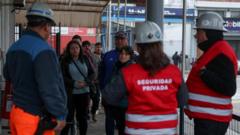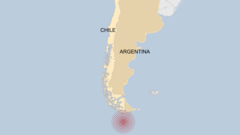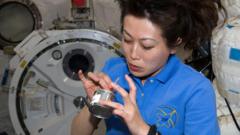A new chapter in astronomical exploration began with the unveiling of the first images from the Vera Rubin Observatory, perched high in the Chilean Andes. This powerful facility, equipped with a state-of-the-art 3,200-megapixel digital camera, has made its debut by showcasing breathtaking visuals, including the Trifid and Lagoon nebulae located approximately 9,000 light years from Earth.
Designed to revolutionize our comprehension of the cosmos, the Vera Rubin telescope is set to conduct a decade-long survey of the southern sky, with capabilities that may uncover a myriad of solar system objects and potentially identify unknown planets. Its advanced technology not only aims to provide high-resolution images of distant galaxies but also promises to enhance our understanding of dark matter—the elusive substance constituting much of the universe's mass.
Professor Catherine Heymans, the Astronomer Royal for Scotland, emphasized the significance of this moment, stating, “For decades we wanted to build this phenomenal facility.” The observatory will serve as a collaborative hub, with the UK playing a central role by hosting data centers responsible for processing the detailed data generated.
Situated at Cerro Pachón, the observatory's location is ideal for stargazing due to its high elevation and minimal light pollution. Precautions are taken to maintain this dark environment, ensuring that even the slightest disturbances do not interfere with the delicate observations made by the telescope.
This telescope's design incorporates a unique three-mirror configuration to capture and focus light efficiently. The high-tech camera collects immense amounts of data quickly, taking images every 40 seconds for approximately 8 to 12 hours nightly. With an image resolution vastly exceeding that of typical smartphone cameras, the telescope's capabilities are set to yield a historic data stream, estimated at 10 million alerts per night.
The surveying project will encompass four key areas of research: monitoring celestial events, understanding the formation of the Milky Way, mapping solar system bodies, and uncovering mysteries surrounding dark matter and the universe’s inception. The continuous observations and alerts for transient celestial objects will empower scientists to identify and study previously unknown phenomena.
In particular, the Vera Rubin telescope is believed to have the strength necessary to unravel the mystery of the hypothetical Planet Nine, theorized to exist at an extreme distance from our Sun. Researchers anticipate this observatory will extend the known boundaries of our galaxy and provide insights into areas that have long eluded detection.
As excitement builds around the first results, astronomers worldwide are prepared to analyze the treasure trove of data that this revolutionary telescope will produce, fostering new discoveries and understanding of the cosmos for generations to come.


















